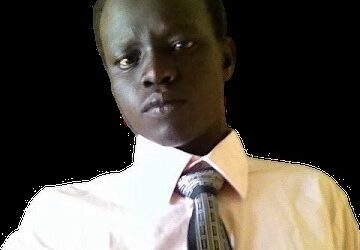By Manas James Okony
Anya Nya civil war, which lasted from 1955 to 1972, was a conflict between the Sudanese government and the Anya Nya rebels, who were fighting for greater autonomy and political representation in the southern region of Sudan.
The conflict primarily unfolded in the Upper Nile province; a strategically important area due to its being the oil-rich region of Sudan. It mainly involved the Anya Nya fighters and the Sudan Armed Forces (SAF) soldiers, but it’s important to note that the civilian population suffered greatly as well. As a result of the conflict, millions of people were displaced and widespread human rights abuses, including extrajudicial killings, torture, and rape.
One particularly gruesome incident took place on March 27, 1964, where SAF soldiers led by Abubakr al-Wagia raided the village of Arini in the Akobo district of the Upper Nile province. The soldiers were searching for a chief suspected of collaborating with the rebels and believed he was hiding in Arini. In an act of brutal violence, the soldiers tied the hands of over fifty unarmed Anyuak men behind their backs and shot them until they were dead. The men were innocent and had been rounded up while daubing and plastering a hut.
This incident serves as a stark reminder of the brutality of war and the toll it takes on innocent civilians. The fact that the victims were tied up and shot in cold blood is particularly chilling and underscores the dehumanizing nature of the conflict. It’s also significant to note that incidents like this were not isolated occurrences during the Anya Nya and subsequent civil wars, as similar atrocities were committed against civilians by SAF in areas such as Awajwok, Bor, and Wau.
Here are names of some of those massacred:
- Chief Akodhi wor Jimjweel
- Nyikwenyi Owar Didier
- Omot Owar (Omotdidier)
- Omot Omot Didier (Omotgak)
- Anyaal Mok Owar Didier
- Otho Odeel (Ajir)
- Ogira Odeel
- Opiew Odeel
- Ochan Odeel
- Odeel Oguak
- Ogal Owar Agak
- Ogalla Owar Agak
- Alora Ojor
- Lual Obono Atieng
- Kwot Oboya
- Nyikewo Obongo Okello
- Nyinger Ochan
- Oballa wor Chilew
- Gilo Owar Agak
- Ojuuk Janyi
- Odari Olimo
- Okello Omeeng
- Chuat Oluc
- Kwalnaam Abui
- Mamour Otiedi
- Kwot Otiedi
- Omot wor-Ajul
- Opoga Othol Owar
- Janyi Atieng
- Ochan Oluc
- Omot Ochalla
- Aman Agak
- Gatkuoth Chuol
- Kulang Kuei-Lual
- Chief Buya Gilo (killed sometimes later)
- Kwot Owar Abull
- Nyiken Akwai
- Akway Ajany
- Ochalla Medho Ogur
- Kueijak Olwaa Ojaa
- Doril Teny
- Omot Abula Obuk
- Ochalla Okodo
- Omot Otho Ager
Agwa Ngori Ojwok and his son Omotbeet were the sole survivors of the massacre.
The author, Manas James Okony, is a journalist and writer. He can be reached via manasjamesokony@gmail.com



